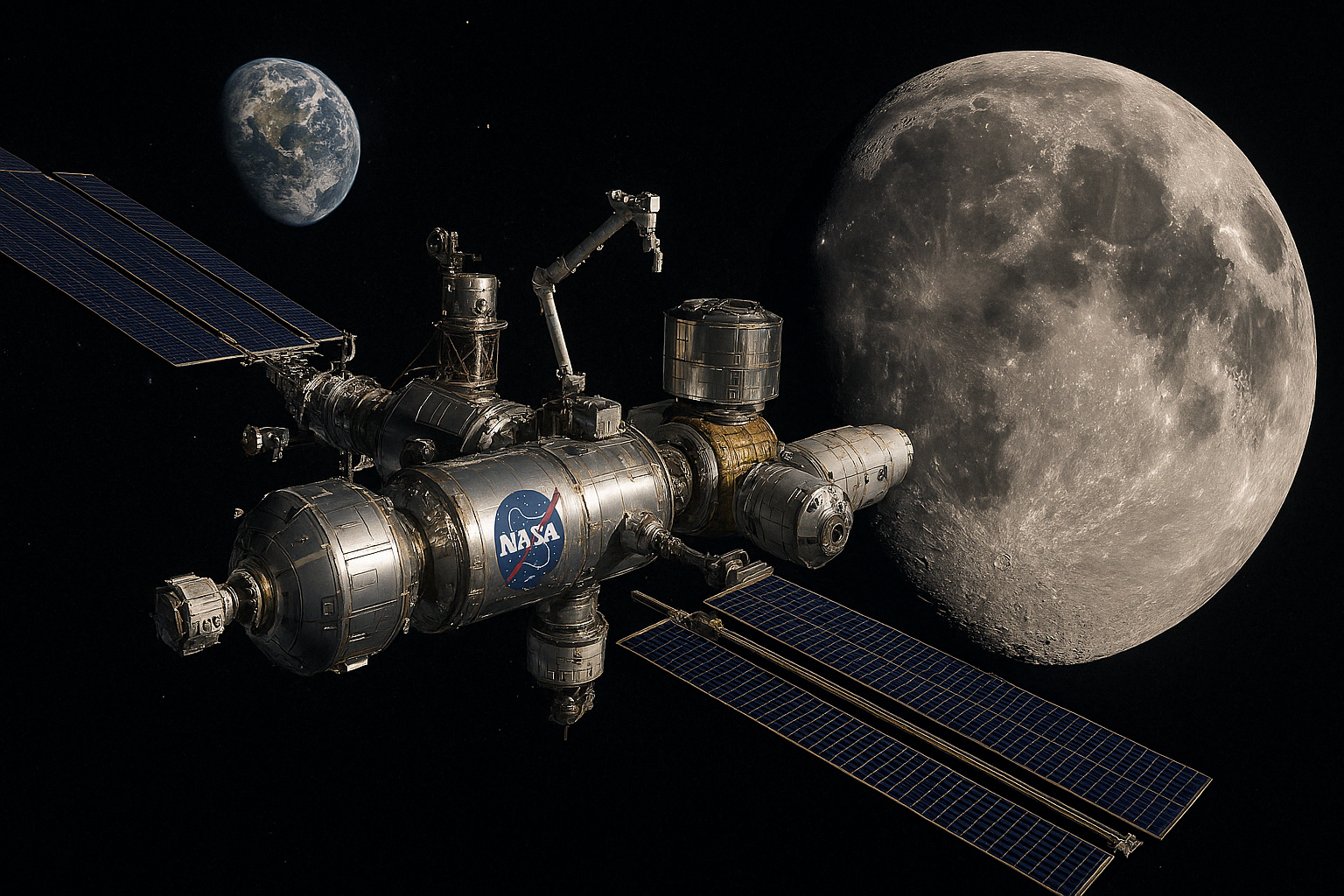NASA’s Lunar Gateway: A New Frontier or a Space Program on the Brink?

NASA’s Lunar Gateway program is a captivating yet contentious initiative that has sparked conversations both in boardrooms and casual coffee gatherings. With its ambitious goal to establish a permanent outpost orbiting the Moon, the Gateway aims to serve as a staging point for lunar and deep-space exploration. But, as grand as it sounds, not everyone is on board. Let’s delve into the latest developments and the reasons behind the debate over its future.
What’s the Deal with the Lunar Gateway?
The Lunar Gateway is envisioned as a small space station that will orbit the Moon. Unlike the International Space Station, which serves as an orbital laboratory just a few hundred kilometers above Earth, the Gateway is meant to be a springboard for missions to the Moon’s surface and beyond. Think of it as a cosmic pit stop.
Key Features of the Lunar Gateway
- Modular Design: The Gateway will be constructed in stages, allowing for flexibility and expansion.
- International Collaboration: A joint effort between NASA and international partners, including ESA, JAXA, and CSA.
- Support for Lunar Landings: Acts as a logistics hub for lunar missions and potentially missions to Mars.
It’s not just a tech marvel; it’s a symbol of human ambition to explore the unknown. But, like any venture of this scale, it’s not without its critics.
Why the Controversy?
The Gateway has its fair share of skeptics who argue that the project diverts resources and focus from more immediate goals. Some say, “Why not focus on returning to the Moon first?” And they have a point. The financial and logistical demands are substantial, leading to a debate about its necessity.
Criticisms and Concerns
- Cost: The budget for the Gateway is astronomical—no pun intended—and critics worry about the impact on other NASA projects.
- Redundancy: Some argue that the Gateway duplicates capabilities that could be achieved by direct lunar missions.
- Technical Hurdles: The complexity of coordinating international partnerships and technologies is a significant challenge.
Despite these concerns, advocates of the Gateway argue that it’s a crucial step toward sustainable space exploration. But what exactly does sustainable space exploration mean?
Looking Ahead: The Gateway’s Potential
Proponents of the Gateway highlight its role in fostering international cooperation and innovation. It’s like a cosmic meeting point where nations can collaborate on technology and science. Moreover, the Gateway could be the linchpin for humanity’s first steps on Mars.
Benefits of the Gateway
- Science and Research: Enables new scientific experiments and research opportunities in lunar science and beyond.
- Technology Development: Drives advancements in space travel technology, benefiting other sectors.
- Pathway to Mars: Seen as an essential step for crewed missions to Mars, offering a testing ground for longer missions.
The Gateway is more than just a space station; it’s a vision for the future. It embodies the essence of exploration and the spirit of international collaboration. But it’s also a project that requires careful consideration and strategic planning.
The Road Ahead: Navigating Challenges and Opportunities
As NASA and its partners navigate the road ahead, they’ll need to balance ambition with practicality. The Lunar Gateway offers the potential for game-changing discoveries and technological advancements, but it also poses risks that must be managed.
So, where does that leave us? Is the Lunar Gateway a necessary leap toward a new era of space exploration, or is it a costly detour? The answer might depend on whom you ask, but one thing’s for sure: it’s a topic that will continue to capture our imaginations and fuel debates for years to come.
In the end, perhaps the question isn’t whether we should build the Gateway, but rather, how we can ensure it’s a stepping stone to a future where humanity reaches for the stars—together.







